I was asked for some seeds of Clematis recta, so I dutifully collected some yesterday. Same as last year (and I suspect every year prior to that, if only I was more observant), I noticed that from what must have been thousands of flowers, extremely few seeds were produced. I had to examine the whole plant to collect about 20 seeds and I never found more than one developed seed in a seedhead... loads of tufty white undeveloped seedheads but hardly any seeds.
It seemed to be very popular with pollinators - one of those plants that creates its own sound effects with the deep buzzing drone of many happy (? - who knows?) bees... though strangely my photos didn't capture any bees in it.
The sparsity of developed seeds seems very curious. Any idea why this is?
By the way, it is a glorious plant, as is the 'Purpurea' form. This year, I did better at supporting its lax growth than usual, and managed to keep it from flopping all over the peony and other plants in front of it. (On the other hand, it might be really nice to just let it flop, though I didn't account for that possibility when I planted that area.) We built a small tower of rooted tree stumps behind it, to which I roped it up a couple of times. The green garden cord I used was nicely camouflaged at first but quickly faded to a more visible tan but what the heck, it worked.
This morning - I see I missed a few seeds:

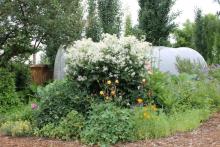
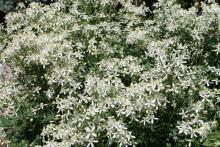
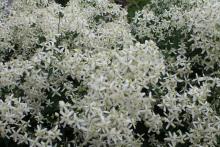

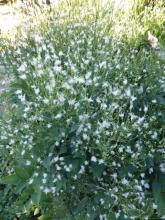
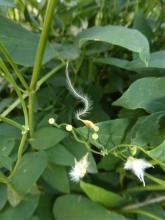


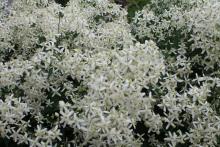

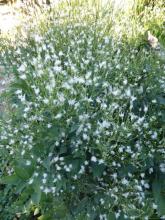
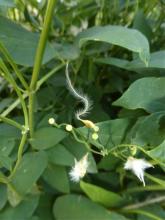
Not THE DEFINITE answer for sure, but I can say that your experience of low fertility is not mine. I have a Clematis recta purpurea in a pot, left over from the our Chapter sale this year. It later bloomed, and as I often do because of curiosity (or laziness), I let it go to seed. Even with this stressed out plant, proportionally speaking, it set quite a number of seeds. In fact, nearly all flowers set seed; shown are the ones still attached at the time of the photo snapshot. It's the only Clematis recta I have, and no other clematis were blooming at the time.